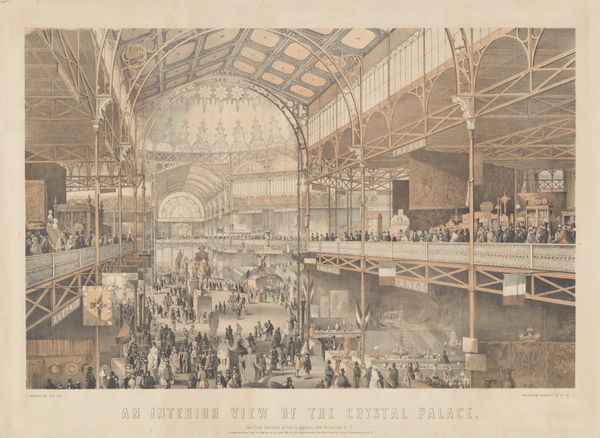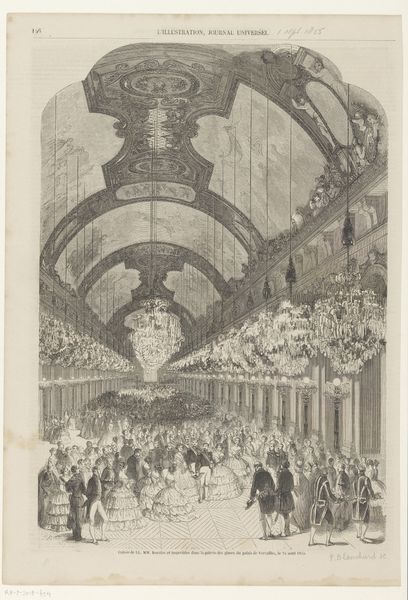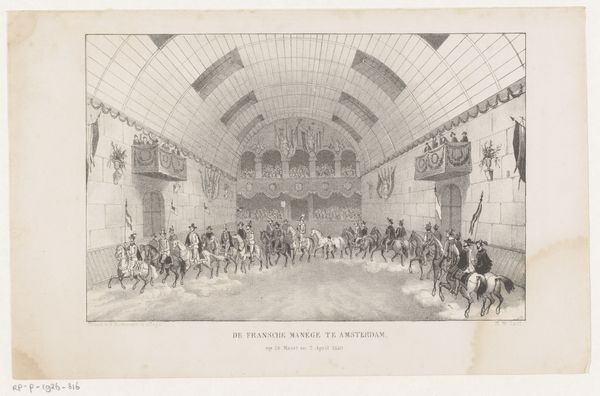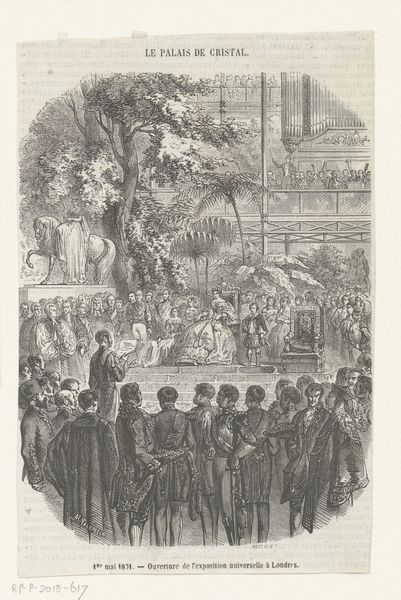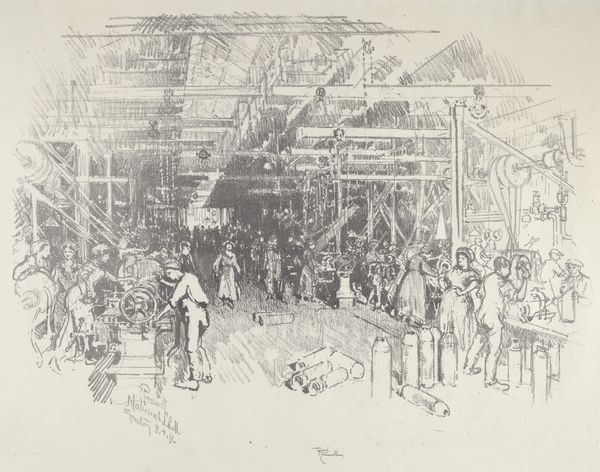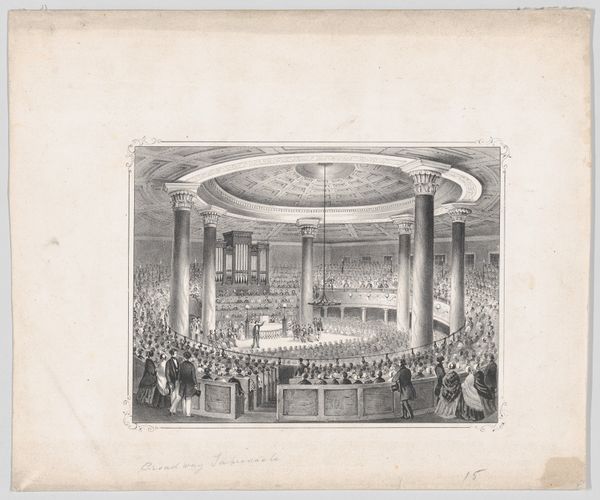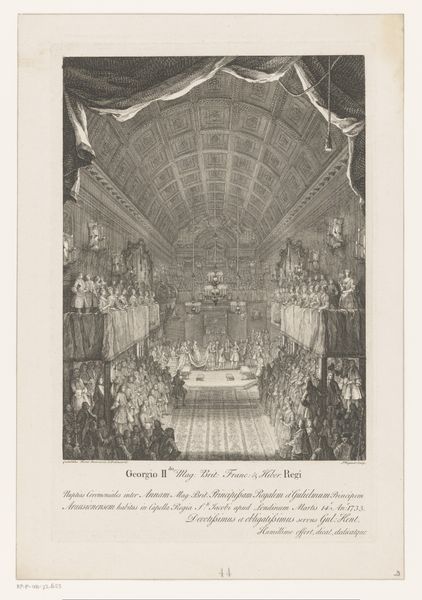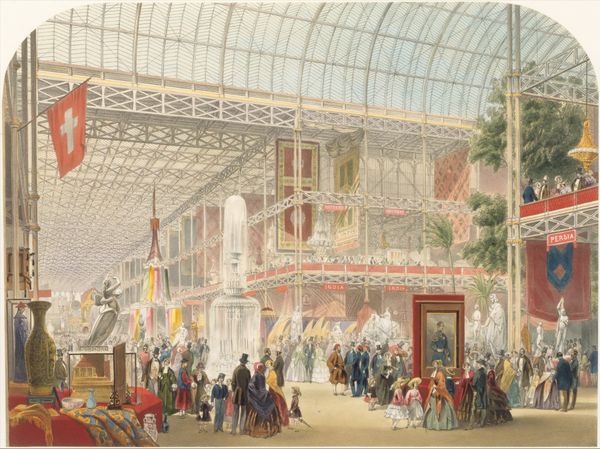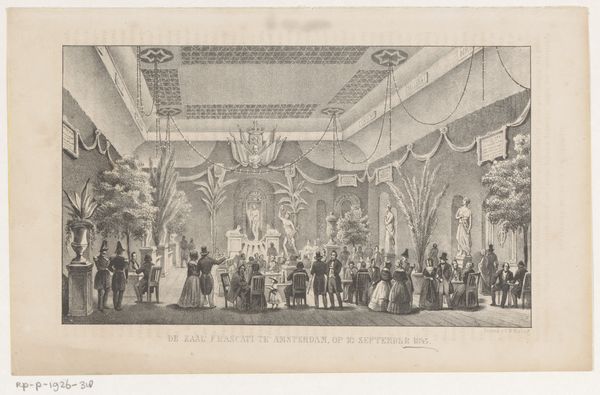
The Opening of the Great Industrial Exhibition of All Nations, by Her Most Gracious Majesty Queen Victoria and His Royal Highness Prince Albert, on the 1st of May, 1851: The View is Taken from the South West Gallery, at the time when the Archbishop is offering up a Prayer for the Divine blessing upon the objects in the Exhibition 1851
0:00
0:00
drawing, print
#
drawing
#
aged paper
#
toned paper
# print
#
old engraving style
#
personal sketchbook
#
pen-ink sketch
#
ink colored
#
pen work
#
sketchbook drawing
#
watercolour illustration
#
sketchbook art
Dimensions: Sheet: 12 1/2 × 19 11/16 in. (31.8 × 50 cm)
Copyright: Public Domain
Editor: Here we have "The Opening of the Great Industrial Exhibition…" by George Cruikshank, dated 1851. It's a print, seemingly an engraving or etching, teeming with figures within a vast architectural space. The detail is incredible! What strikes you most about this work? Curator: For me, the fascination lies in the sheer audacity of depicting industrial production in the same breath as a religious ceremony. Look at the Crystal Palace itself - its glass and iron construction, typically reserved for greenhouses, is here repurposed to showcase the fruits of empire. The architecture, materials, and mass-produced items within challenge the traditional concept of 'art' crafted by an individual. It raises questions about labour, industrial innovation, and consumption on a global scale. Do you see any tension between the "high" ceremony and the "low" manufacturing on display? Editor: I do. The inclusion of the prayer feels like a deliberate attempt to sanctify industry, as if seeking divine approval for this new era of mass production. It almost feels propagandistic in its intent, especially knowing the materials showcased came from all corners of the empire, often through exploitation. Curator: Exactly. Think of the embodied labour it took to extract those resources. Cruikshank's print, by documenting this opening, also unwittingly exposes the links between imperial ambition and the raw materials fueling British industry. The Crystal Palace itself was disassembled and reconstructed elsewhere—a monument to industrial portability, wouldn't you agree? What are the implications of such relocation? Editor: I never thought of that. The relocation after the Exhibition ended... It points to the disposability inherent in industrial production. Thanks to your perspective, I see how this print not only documents an event, but reveals the underlying ideologies about the making and consumption of goods. Curator: Indeed. Seeing art as a product, embedded in social, political, and material conditions, offers a rich alternative to simply admiring its aesthetic beauty. I've also learned to look for the unintentional revelations hidden within seemingly celebratory pieces like this.
Comments
No comments
Be the first to comment and join the conversation on the ultimate creative platform.
